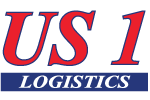“This isn’t just math—it’s your roadmap to a profitable business.”
You’ve got the hustle. You’re chasing leads, booking loads, and eyeing bigger goals. But if your financials are still scribbled on napkins—or worse, just a vague idea in your head—it’s time for a reset. Because in this business, ambition alone won’t get you funded, scalable, or sustainable.
Whether you’re a freight broker agent managing LTL across the Midwest, a drayage agent supporting port operations, or an intermodal agent coordinating complex routes, the financial section of your business plan is what ties it all together. It’s not just for lenders or investors—it’s for you.
It tells you:
-
What success looks like in numbers.
-
Where your biggest expenses live (and how to control them).
-
When to reinvest and when to hold back.
-
How much runway you’ve got—and how much profit is realistic.
The clearer your numbers, the clearer your next move. This isn’t accounting for the sake of busywork. It’s the fuel that powers every smart decision, from hiring help to scaling operations. Want to turn hustle into a sustainable business? Start with the math. It’s not optional. It’s your edge.
Why Most Agents Avoid the Numbers (and Why You Can’t)
Let’s face it—many truck freight brokers and freight agent brokers are strong on sales but weak on spreadsheets. It’s not because they don’t care about profit. It’s because the numbers can feel overwhelming. But if you don’t know your costs, margins, and targets, you’re flying blind.
Here’s the truth: the financial section doesn’t have to be complicated. It just needs to be honest, clear, and built to scale with you.
Step 1: Start with Startup Costs
What’s it take to get off the ground?
-
Load boards and TMS subscriptions
-
Marketing expenses (LinkedIn ads, business cards, website)
-
Office setup (even if it’s just a corner in your home)
Create a simple spreadsheet and map out your upfront needs.
💡 Tip: Most successful freight agents invest $2,000–$5,000 to launch their operation with the basics covered.
Step 2: Model Your Monthly Revenue
Ask yourself:
-
How many loads can I realistically move each month?
-
What’s my average commission per load?
If you move 40 loads a month at $125 average commission, that’s $5,000 in gross revenue. Now subtract tools, marketing, and taxes. That’s your real take-home. And now, you’ve got a goal to work toward (or exceed).
💡 Pro tip: Freight broker agents with a strong niche (like reefer or LTL) often hit their revenue stride faster because they focus on high-margin lanes.
Step 3: Know When to Invest
The best freight agent brokers know that trying to do everything solo is a recipe for burnout—and stalled growth. Instead of juggling every task, they focus on what actually moves the business forward: prospecting, closing, and serving high-value clients.
That’s where smart investments come in.
-
CRM systems help manage your leads, follow-ups, and conversion metrics in one place. No more sticky notes or lost emails—just organized outreach that boosts your close rate.
-
Virtual assistants can handle time-consuming tasks like booking calls, inputting load data, updating spreadsheets, or even monitoring your inbox. That frees you up to focus on building relationships and moving freight.
-
Bookkeepers aren’t just for tax season. They keep your finances clear year-round, help you track profitability by client or lane, and make loan or investor conversations way smoother.
The golden rule? If a tool or service saves you time and grows your revenue, it’s not a cost—it’s leverage. It’s what allows top-producing freight brokers to scale without sacrificing sanity. Don’t think of it as an expense. Think of it as buying back your time to focus on what actually builds your business.
Step 4: Forecast with Flexibility
Build three models to take control of your financial roadmap—because hope isn’t a strategy, and surprises (good or bad) are part of the game:
1. Lean: This is your survival baseline. It covers just the essentials—software, tools, insurance, load board subscriptions, maybe a virtual assistant. It’s what your business needs to stay alive during slow months or if a major client pulls back. Knowing this number gives you peace of mind and helps you avoid panic decisions when revenue dips.
2. Base: Your realistic scenario. This model assumes steady client volume, average lane profitability, and consistent close rates. It reflects your expected monthly growth and gives you a stable outlook to plan hires, software upgrades, or marketing campaigns. This is the version most lenders or investors will want to see, too.
3. Stretch: This is your dream-but-doable projection. If that new LinkedIn strategy pops, if you land two enterprise shippers, if referral traffic spikes—what would it look like? Your stretch model keeps you motivated, guides your high-risk/high-reward decisions, and helps you plan future scaling moves (like adding team members or launching in new regions).
Mapping these three models gives you clarity on cash flow, helps you plan smarter, and lets you prepare for lean times and breakout success. It’s like building three GPS routes: you’ll know the detour, the normal drive, and the express lane—so you’re ready for whatever road you hit.
Final Thought:
If you’re serious about scaling, your financials can’t live in your head—they belong in a plan. They’re not just numbers. They’re signals. They show you where you’re thriving, where you’re bleeding, and what’s worth your time. When you read them right, they guide every smart decision—from hiring your first dispatcher to investing in CRM software or adjusting your margins on specific lanes.
As a freight broker agent or independent trucking agent, your income depends on margins, not just volume. And your costs? They creep up fast if you’re not tracking every tool, system, or outsourced load board. A smart financial plan helps you prioritize the essentials, avoid overcommitment, and build toward your goals with confidence.
Need help mapping out your budget or building a freight-friendly revenue model? Drop a message—I’ve got templates and tools tailored just for freight agents like you. Whether you’re starting from scratch or refining your numbers, we’ll build your roadmap to profit. 💰📈


Recent Comments